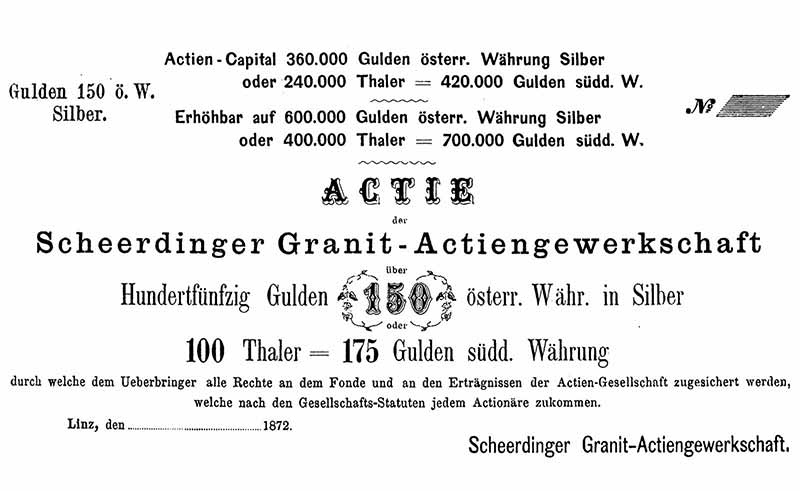The granite boom awakened the entrepreneurial spirit. I’d like to present three examples from our region. These granite pioneers began with entirely different circumstances.
The first pioneer is Johann Kerber from the Kittlmühle mill near Büchlberg. In 1870, the wealthy mill owner and oil manufacturer opened a quarry in the mountainous forest area of Büchlberg. In just a few years, the business developed into one of the largest and most successful natural stone companies in eastern Bavaria. When Kerber’s three sons took over the business in 1885, the company already had 120 employees. After the acquisition of further quarries with rail links, the number of employees rose to almost 1,000.
The second granite pioneer: Josef Kinadeter from Hauzenberg. This trained master stonemason was the founder of the Hauzenberg granite industry. From 1883 on, his company was, for many years, nearly the sole supplier of curbstones to the city of Munich. Kinadeter acquired and leased several quarries. The one with the best stone deposits was the Schachet quarry – where you, dear guest, are currently standing. Kinadeter eventually moved to Munich, where he resided in a villa in the Theresienhöhe district. His son Josef ran the company in Hauzenberg, which around 1900 had about 200 employees.
The third pioneer is Georg Kusser from Renholding near Hauzenberg. He set about making paving stones with the help of two brothers. From virtually nothing, Kusser managed to rise from a simple stonecutter to a respected and successful granite industrialist. In 1938, the company employed 950 people in 23 quarries. For decades, the Kusser company was the dominant one in the region, until it was split up in 1982.
In general, the granite industry developed rapidly towards large companies with several quarries and hundreds of employees. A key reason for this was technological advancement, which required a high capital investment. Time and again, companies were taken over with the aim of dominating the market. The prime example was the “Bavarian Granite Corporation,” which employed up to 1,500 people and operated countless quarries from Schärding all the way up to the northern Upper Palatinate.
To speak only of success, however, would not do justice to reality. The granite industry, in particular, has experienced enormous ups and downs. This is the subject of our next chapter, which begins just to your left.
